Top Ten Health Discoveries You Probably Missed
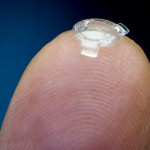 1. Bionic Vision – You probably never thought something would come along to give you super-vision. But this Canadian doctor has invented a lens for implantation in your eye that will give you exactly that. “If you can just barely see the clock at 10 feet, when you get the Bionic Lens you can see the clock at 30 feet away,” says Webb.
1. Bionic Vision – You probably never thought something would come along to give you super-vision. But this Canadian doctor has invented a lens for implantation in your eye that will give you exactly that. “If you can just barely see the clock at 10 feet, when you get the Bionic Lens you can see the clock at 30 feet away,” says Webb.
You will be able to see close up, for reading, mid distance and long distance, with more clarity than ever before. The operation will take 8 minutes, and should be available in some areas in two years.
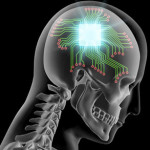 2. Talking to Computers – The US military is developing an interface between the human brain and computers. “The interface would serve as a translator, converting between the electrochemical language used by neurons in the brain and the ones and zeros that constitute the language of information technology”, says an article.
2. Talking to Computers – The US military is developing an interface between the human brain and computers. “The interface would serve as a translator, converting between the electrochemical language used by neurons in the brain and the ones and zeros that constitute the language of information technology”, says an article.
“The interface would serve as a translator, converting between the electrochemical language used by neurons in the brain and the ones and zeros that constitute the language of information technology. ” This new technology could potentially restore lost hearing or sight. Other diseases could potentially also be managed or cured. ALS, Parkinsons and others are possibilities.
 3. Pain Treated with Light – Traditionally, severe pain is treated with opioid drugs like Oxycodone and Fentanyl. This has caused huge problems with addiction all across North America, and of course long-time use of opioids is bad for anyone’s system.
3. Pain Treated with Light – Traditionally, severe pain is treated with opioid drugs like Oxycodone and Fentanyl. This has caused huge problems with addiction all across North America, and of course long-time use of opioids is bad for anyone’s system.
Now, scientists have discovered a way to trigger the opioid centers of the brain, using light. If this technology advances, perhaps opioids may no longer be necessary, and light would take their place.
With light, patients can get relief without the associated liver and kidney problems of long-term opioid use.
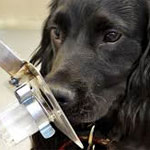 4. Dogs can Detect Cancer – And why not? Dogs can smell ten thousand times better than us. That means they could detect a teaspoon of sugar in a million gallons of water. They are ideally adapted to smell an illness in a person.
4. Dogs can Detect Cancer – And why not? Dogs can smell ten thousand times better than us. That means they could detect a teaspoon of sugar in a million gallons of water. They are ideally adapted to smell an illness in a person.
German scientists tested two German shepherds, a Labrador retriever, and an Australian shepherd. Each dog sniffed the breath of 220 patients, correctly identifying lung cancer at a rate of 71 percent.
Dogs may not be used directly in disease detection, but scientists hope to use this knowledge to develop sensors to track and detect cancers.
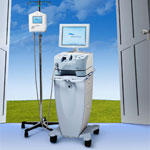 5. Robot Anesthesiologist – A new machine called the Sedasys may one day replace anesthesiologists. For now, it is taking the place of an the expensive specialist in simple procedures like colonoscopies.
5. Robot Anesthesiologist – A new machine called the Sedasys may one day replace anesthesiologists. For now, it is taking the place of an the expensive specialist in simple procedures like colonoscopies.
The machine administers sedatives and monitors the patient. In this way, one anesthesiologist can be responsible for several patients. Do anesthesiologists like the new machine? No, they believe that nothing can take the place of their training and experience, a valid argument. But the machine is being used in four US hospitals now for colonoscopies, so technology is marching on.
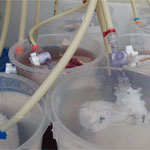 6. Building Organs from Scratch – For years, scientists have wished for the ability to create new body parts in the lab. With the advent of 3D printers, this wish is turning into a reality.
6. Building Organs from Scratch – For years, scientists have wished for the ability to create new body parts in the lab. With the advent of 3D printers, this wish is turning into a reality.
This isn’t just any 3D printer, it’s a new, sophisticated machine which can fabricate human tissue of any sort. Think liver, kidneys, arms and legs. Scientists at Wake Forest Baptist Medical Center have developed this system. The new parts, when implanted into living tissue, become viable organs.
 7. Laughing Prevents Memory Loss – Laughing and having fun reduces stress. Scientists wondered if less stress would help relieve memory loss in seniors.
7. Laughing Prevents Memory Loss – Laughing and having fun reduces stress. Scientists wondered if less stress would help relieve memory loss in seniors.
They tested a group of seniors by testing their memories, then having them watch a funny movie. Those who laughed at the movie tested better on the memory test after the film. Those who didn’t enjoy themselves fared less well.
The moral of this story is plain to see: Let go of anger and strife and enjoy yourself- less stress helps your life in all kinds of ways!
 8. Paralyzed Limbs can Move Again with Brain Power – Scientists in Washington are working on a new device to help paralyzed limbs work again. What a boon this would be for millins of people worldwide.
8. Paralyzed Limbs can Move Again with Brain Power – Scientists in Washington are working on a new device to help paralyzed limbs work again. What a boon this would be for millins of people worldwide.
The schedule is to have clinical trials in about eight years, so it is not imminent. However, this technology builds upon tests done which made a paralyzed man walk. The new device would actually be implanted into the brain.
The device would then reconnect areas of the brain and nervous system that haven’t been communicating due to injury or stroke.
 9. A Bacteria That Helps Smokers Quit – Quitting smoking is one of the most difficult things people do. Many try it five or six times before making it. Part of it is the actual addiction, which is as strong as that to heroin. Part of it is the lifestyle around smoking.
9. A Bacteria That Helps Smokers Quit – Quitting smoking is one of the most difficult things people do. Many try it five or six times before making it. Part of it is the actual addiction, which is as strong as that to heroin. Part of it is the lifestyle around smoking.
Researchers have discovered a bacterial enzyme that kills nicotine before it ever gets to the brain. They hope that destroying nicotine before it gets to the brain and releases dopamine (the reward), they will help lessen the desire to smoke.
Time will tell if this latest quitting device will work. But if you still smoke, it’s important to find a way to quit. There are many reasons to quit smoking.
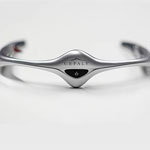 10. New Technology for Migraine Sufferers – Two FDA-approved devices provide a different way to deal with migraine headaches. One is the Cephaly band, the other is called Spring TMS.
10. New Technology for Migraine Sufferers – Two FDA-approved devices provide a different way to deal with migraine headaches. One is the Cephaly band, the other is called Spring TMS.
Cephaly is used daily to prevent the attacks. Spring TMS is used at the onset of the attack, at the first sign of pain.
You must be logged in to post a comment.